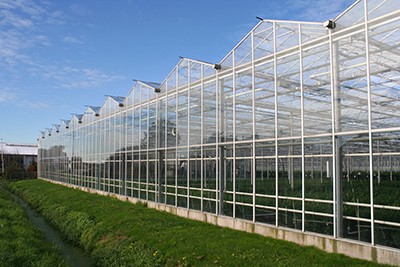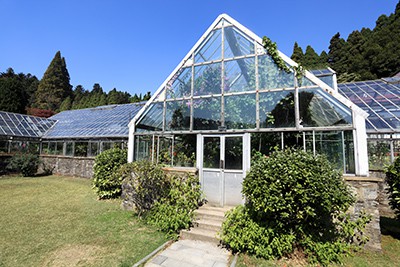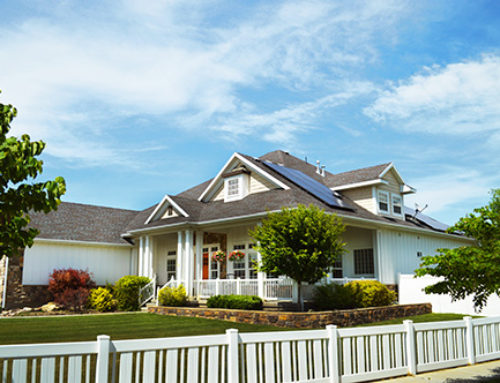Why Greenhouses are the Ultimate Solar Energy Technology

More and more people are recognizing the benefits of using renewable energy. One of the best sources of renewable energy is the sun, which generates solar heat. For years, the problem was how to prevent heat loss since the nighttime would cool off any heat absorbed during the day. With recent advances in electric power, we can now absorb the sun’s energy and convert heat storage into clean, renewable energy.
The most obvious use of thermal energy was the home. For a long time, solar panels have been used to harness the sun’s energy for use in homes. But have you ever thought about combining solar and farming? Solar energy works well for that purpose!
This article will look at how a solar greenhouse harnesses energy and helps you become energy independent.
Solar Energy and Technology
Solar greenhouses use a special photovoltaic solar panel that was developed for greenhouse roofs.

It not only generates renewable electricity but can also help plants in their food-making process, known as photosynthesis, using a light-altering dye. So, how does this new solar energy technology achieve this?
Typically, placing solar panels light-altering a greenhouse roof would not be considered the brightest idea. One would think that the panels would block out the sun’s rays, which is counterintuitive since plants need those rays to make their food.
But this is no traditional greenhouse. New solar technology generates electricity without harming plant growth inside the greenhouse. They also provide cooling during the summer, preventing the plants from overheating.
This energy-efficient greenhouse system has also been designed to exploit annual oscillation (the variation in the height of the sun’s path across the sky throughout the year). It can work with other solar technology, such as a solar generator, to power your home and reduce your carbon footprint.
Why Solar Technology?
Plants convert solar energy into food.

In that regard, gardens and vegetable patches are like solar panels. You can capture a lot more of that energy to extend your growing seasons and produce more food by utilizing greenhouses and cold frames.
A greenhouse doesn’t increase the sun’s energy or concentrate the incoming light. This means that ground under a greenhouse doesn’t receive more light than a patch of land not under the greenhouse. So, how does greenhouse solar work?
Sunlight is not just any other kind of light. It carries heat energy as well. Therefore, when sunlight passes through a material such as glass, some converts into heat energy. The panes of a greenhouse usually capture that heat energy and hold it in. From there, solar heating benefits the insulation supported in conventional greenhouse design, and it also adds passive solar energy into any electronics running on the property.
Whether that’s powering attached solar greenhouses or your home, a solar greenhouse design’s ability to increase the flow of electricity is impressive.
Benefits of Solar Energy and Technology of Greenhouses
Preventing Greenhouse emissions
The benefit of utilizing a solar greenhouse is that you will not have any greenhouse emissions typical of a regular greenhouse.
Most of those gases are usually toxic to the plants inside the greenhouse. By utilizing solar power, those gases will be absent since solar energy is usually pure. In fact, one of the biggest environmental challenges that we have been trying to fight is the emission of greenhouse gases. This is why the technology of solar energy is so precious.
Cost Savings
A greenhouse usually consumes a lot of energy. It needs that energy to maintain the most appropriate temperatures, lighting, and other critical processes for an effective greenhouse. As such, this will quickly do a number on your overall energy bill. Moreover, when you have a power interruption, such as a power outage, your crops might get affected.
However, when you have self-heating solar greenhouses, it’s a game-changer. You will only need to install the solar arrays, and everything will be good to go. You will no longer have to make any more power payments for your greenhouse. One of the most popular reasons people are adopting solar-powered greenhouses is the long-term savings they will make.
Enhanced Effectiveness and Efficiency
When you use other power sources, you will also need a good temperature control system inside the greenhouse. In solar-powered greenhouses, however, you can adjust your settings so that when there is a lot of heat, the panels above will stop directing that heat inside. You can also install vents on the roof so that the sensors cause the roof to automatically open whenever there is too much heat.
Moreover, the solar power that you store during hot days can be used to keep the greenhouse working as normal during hot days. This, therefore, implies that you will not have to invest in other heating alternatives when it gets too cold, such as during brisk fall and cold winters. It’s especially important to maintain solar radiation levels in cold climates, and passive solar greenhouse designs help you do that.
Another efficient solar heating method is using a solar pool heater. Pool heaters keep water at a comfortable temperature all day long by channeling solar electricity into the bottom of the pool, then letting the heat rise throughout the pool. Like solar greenhouses, pool heaters cut back on harmful fossil fuels.
You Can Place Your Greenhouse Anywhere
This latest solar energy technology allows you to build your greenhouse anywhere you want. However, when using electricity, you will be forced to place the greenhouse only in locations where electricity is near. You might also consider building them in conjunction with solar battery chargers, which let you store excess solar energy for later use.
This is especially beneficial for people living in rural areas where electricity supply is not always assured. This allows them to grow greenhouse crops and make a profit without the need for electricity.
Does this Solar Energy New Technology Affect Plants?
One study looked at the effect of solar-powered greenhouses on plants. The team tested the growth and fruit production of 20 different tomatoes, lemons, cucumbers, peppers, limes, basil, and strawberry. The scientists reported that 80 percent of the plants’ crops were unaffected; 20 percent grew better.

This means that this new solar energy technology has no adverse effects on your crops. In fact, it can only make them better.
